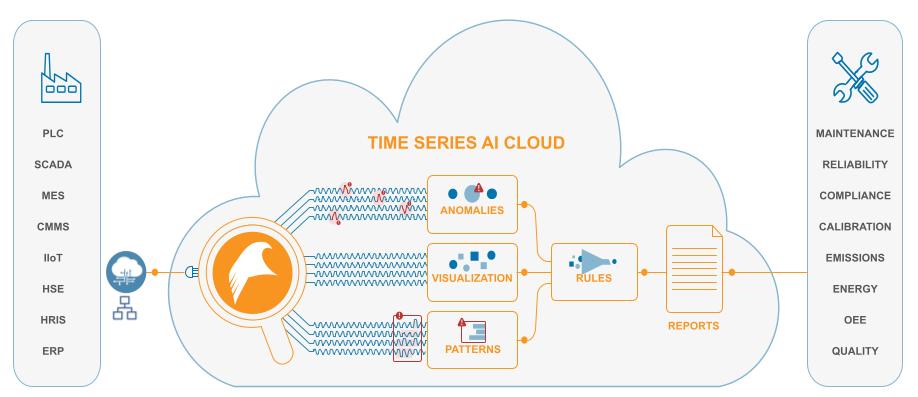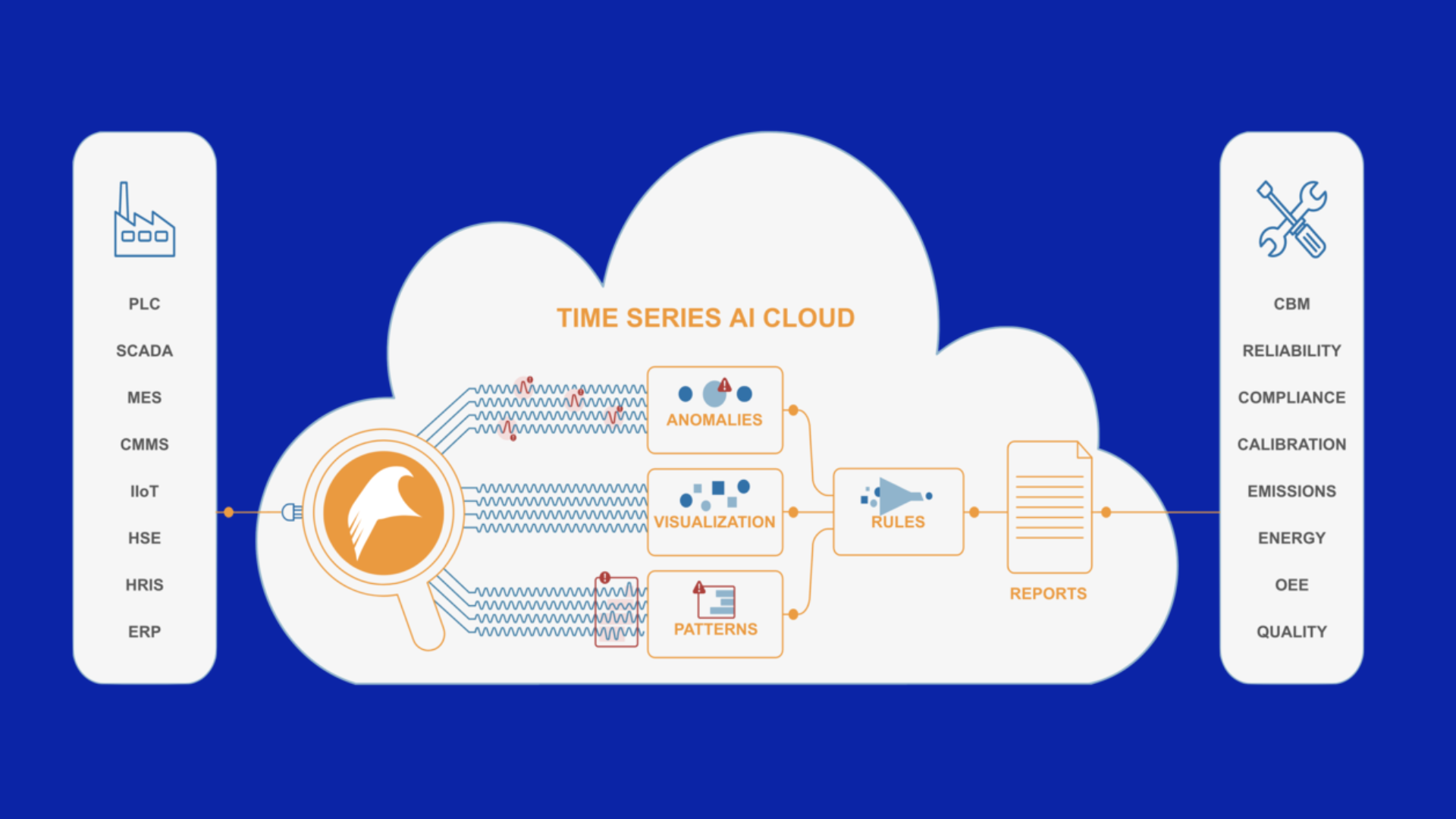Unified Smart Manufacturing Architecture
Key takeaways:
- Different sources contribute important context to any analysis, and open technologies are essential when scaling Smart Manufacturing to large enterprises
- Falkonry Time Series AI Cloud now seamlessly integrates with MQTT brokers and UNS, enabling collaborative analysis of output data while leveraging your standardized asset hierarchy
- Given the vast industrial time series data, enhanced user experience, automation, and spending flexibility are crucial for achieving advanced analytics goals
Industrial organizations are seeking to exploit insights from all of their different operational data sources such as SCADA, PLCs, networked sensors, Historians, MES, CMMS, HSE, and ERP. Built-in analytics in each of these systems are leaving large efficiency and compliance gaps while leaving the rest of the organization starving for data to improve business outcomes simply because they can’t access and analyze that data.

UNS, MQTT, Smart Manufacturing and Falkonry Cloud
These sources communicate over a wide range of general purpose messaging technologies such as OPC, MQTT, and industrial networking technologies. Different sources also contribute important context to any analysis, which is often not possible with just a single data source. Especially when scaling Smart Manufacturing to large enterprises, it is essential to use open technologies as the architectural foundation.
This is why we are opening the Falkonry Time Series AI Cloud architecture in two important ways.

Time Series AI Cloud Architecture
MQTT direct subscription
Falkonry Time Series AI Cloud is now able to directly subscribe to MQTT brokers whether that is Aveva Data Hub, HiveMQ, RabbitMQ or Litmus UNS. This means you can bring data to Falkonry from your sensor cloud or data mesh without any Falkonry-specific effort. This also means you can combine and jointly analyze output data, for example from test harnesses with data from MES and PLCs of your equipment. Regardless of whether their sampling rates match or whether they have communication delays, R&D as well as QA teams can quickly get to the insights from their data.
Unified Namespace (UNS) data access
Falkonry Cloud can now connect to your Unified Namespace (UNS) and start receiving data from your enterprise message bus. Falkonry Cloud leverages UNS architecture to make consume data from across all layers of a business. This means you have to do even less to get more out of your data. This builds on your standardized asset hierarchy to keep all parts of your Smart Manufacturing Architecture aligned and means that you can identify data in the same way across every application.
Data access and storage format
Falkonry Time Series AI Cloud provides direct API to export raw time series data as well as processed results. Typically, Falkonry APIs are used to retrieve data using tools such as Mulesoft and POSTMan into analytics tools such as PowerBI. Since Falkonry stores all the data it receives, you can now readily recreate state for any part of your namespace at any given point in time.
Also, Falkonry stores its data in Parquet files which means your historical data will never be under vendor lock in. You can directly use these files to feed any other ETL processing in case you want to run custom models or calculations on that data.
New capabilities
Falkonry is working on new no-code live processing capabilities around rules so that you can produce simple threshold based alerts as well as you can control alerting from AI automated anomaly detection and pattern recognition engines. With this, Falkonry Time Series AI Cloud enables immense scale in your time series processing needs to cover the entire enterprise by providing visualization, pattern analysis, anomaly analysis, time forecasting as well as rules and threshold analysis in a no-code environment. Calculations are also available in a low-code environment, which can facilitate the easy creation of derivative time series.
What’s more, Falkonry Time Series AI Cloud is available to be used on-demand and can also be deployed as is inside your own data centers or in the field on any Kubernetes friendly infrastructure. This is because Falkonry Cloud is independent of any cloud or infrastructure provider. To validate this, we have already deployed Falkonry in Air gap infrastructure on premises with no data or models moving in or out of that infrastructure.
No code Data Quality solution
You may already know that the Time Series AI Could sets you free from 5 main headaches of analytics for Smart manufacturing:
- Data prep
- Data labeling
- Data management costs
- ML Ops
- Data science development
And unlike many approaches that require 5 to 10 specialized technical skills to achieve success, with Falkonry:
- No cloud, that’s ok (we deploy into premises)
- No data scientists, that’s fine (we don’t need any)
- No software engineers, that’s not a problem (we are no-code)
- No labeled data, that’s cool (we can work with just time series data)
Open architecture and extreme automation
Given the tremendous volumes of time series data in every individual plant and enterprise, this level of user-friendliness and automation is the only way industrial organizations can achieve their advanced analytics objectives. We continue to invest in better user experience, greater automation, and higher spend flexibility so that organizations can manage their needs in the most responsive way possible. As a result, we continue to receive interest from life sciences companies, discrete & automotive manufacturers, renewable energy firms, energy producers as well as metal producers from all over the world.
If you are interested in learning more about the range of Falkonry’s capabilities, IT friendliness, compliance, or our unique pay-as-you-use pricing, hit us up.





